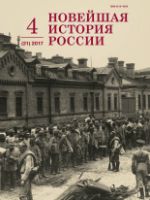Комсомол и молодежная печать в период ранней «оттепели»
Komsomol and Youth Press during the Early “Thaw”
Author(s): A. A. SlezinSubject(s): Media studies, Political history, Social history, Post-War period (1950 - 1989)
Published by: Издательство Исторического факультета СПбГУ
Keywords: youth; Komsomol; Pioneers; newspapers; magazines; political culture; Thaw; press;
Summary/Abstract: The subject of the research is the relationship between the Komsomol and youth publications in the middle and in late 1950th. The main sources of information were based on the archives, mainly The Russian State Archive of Socio-Political History (RGASPI). And the Russian State Archive of Socio-Political History of the Tambov region (GASPITO), along with periodical publications of the 1950s. Komsomol is seen as a social and cultural phenomenon. Komsomol actions are predominantly evaluated from pan-human and national viewpoints. For the objective estimation of the consequences of Komsomol’s activities it was important to admit the basics of Ilinsky’s concept of bringing up healthy generations. After the analysis of the decisions of the central and regional All-Union Leninist Young Communist League (AULYCL) agencies, the author comes to the conclusion that the Komsomol was restraining the process of expanding public openness. Alongside this, the AULYCL was recruiting young people to work in the sphere of Mass media, helping develop cub reporters’ movement, bulletin boards, as well as implementing innovative approaches to moulding magazine and newspaper contents, and drawing the Mass media attention to young people’s needs. A lot of attention has been centered around understanding the ethical principles of the Soviet youth journalism and the term “truthfulness”, criticizing methods of adulteration, exploring the sphere of personal interests and highlighting the theme of a small human and a citizen. The author also identifies certain youth publishing intentions depicting the realities of everyday life more precisely and demonstrating the problem of approaches to the perception of reality. It has been shown that the Komsomol advocated for the development of criticism and self-criticism, but at the same time did not favor discussing weak points and issuing offensive publications. A lot was dedicated to discussing essential printing materials and making arrangements for eliminating evident problems
Journal: Новейшая история России
- Issue Year: 7/2017
- Issue No: 21
- Page Range: 133-147
- Page Count: 15
- Language: Russian

